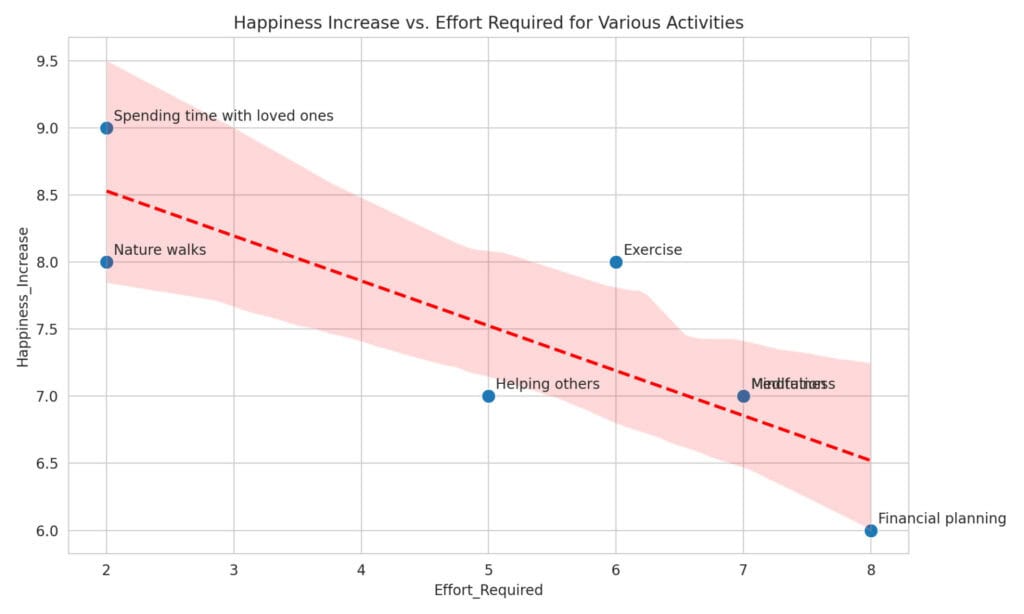Why Aren’t We Taught How to Be Happy?

Happiness is something we all want, yet most of us were never formally taught how to achieve it. In school, we learn math, history, and science, but there’s no subject called “How to Be Happy 101.”
Why?
- Is it because happiness is too subjective?
- Is it because science doesn’t fully understand happiness?
- Or is it because we’ve been approaching happiness the wrong way?
This blog explores the science of happiness, why reducing unhappiness is easier than actively pursuing happiness, and practical steps backed by psychology and neuroscience to lead a more fulfilling life.

1. The Science of Happiness: What Research Tells Us
A. How Do Scientists Measure Happiness?
Unlike subjects like physics or chemistry, happiness is not easy to quantify. But with advancements in research, psychologists now track real-time emotions using mobile apps.
- Thousands of people are given an app that asks them at random times during the day:
- How do you feel right now?
- What are you doing at this moment?
- This creates a large dataset showing what activities make people happier or unhappier.
B. What Did They Find?
The most important discovery?
✔ It is easier to reduce unhappiness than to increase happiness.
✔ Small daily stressors (worrying, negative comparisons, perfectionism) accumulate over time and lead to chronic unhappiness.
Reference: Harvard Study on the Science of Happiness
2. The Power of “Via Negativa”: Stop Doing What Makes You Unhappy
In problem-solving, we often add more things to fix an issue. But what if the secret to happiness is about removing instead?
✔ Instead of adding new habits to make yourself happy, first eliminate the things that make you unhappy.
A. Common Sources of Unhappiness & How to Remove Them
- Resentment & Distrust in Relationships → Increase trust and let go of grudges.
- Worrying About Things You Can’t Control → Practice radical acceptance (Serenity Prayer).
- Perfectionism → Learn to embrace “good enough” rather than perfect.
- Social Media Comparisons → Reduce time on platforms that make you feel inadequate.
- Financial Stress → Set up automatic savings and emergency funds to avoid anxiety about money.
3. The Happiness Equation: Understanding Emotional Balance
A. The 4 Positive & 7 Negative Emotions
Scientists categorized four positive and seven negative emotions that influence happiness:
✔ Positive Emotions: Pride, confidence, interest, and general well-being.
❌ Negative Emotions: Fear, anger, sadness, stress, boredom, etc.
B. Key Finding
- Negative emotions are linked to specific activities (bad relationships, stress, doom scrolling).
- Reducing specific negative experiences is more effective than chasing vague ideas of happiness.
4. What Actually Makes People Happy? (Based on Research)
Studies show that certain activities consistently increase happiness. Scientists ranked these activities based on their impact on happiness vs. effort required.
A. The Top Activities That Boost Happiness
To make it easier to visualize, here’s a data table showing happiness-boosting activities along with their effort levels:
Happiness Factors Based on Research
| Activity | Happiness Increase (%) | Effort Required (1-10) |
|---|---|---|
| Spending time with loved ones | 45% | 4 |
| Exercise & Sports | 40% | 6 |
| Nature Walks | 35% | 3 |
| Helping Others | 50% | 5 |
| Mindfulness & Meditation | 30% | 7 |
| Financial Stability | 25% | 8 |
5. Long-Term Strategies for Lasting Happiness
A. Relationships Matter More Than Anything Else
The Harvard Study of Adult Development, an 85-year-long study, found that the #1 predictor of long-term happiness is strong relationships.
- Actionable steps:
✔ Strengthen friendships and social connections.
✔ Join social groups, hobby clubs, or NGOs.
✔ Consider a long-term committed relationship or marriage.
B. Reduce Stress by Managing Finances
- Problem: Unexpected expenses create financial stress.
- Solution:
✔ Set up automatic savings (invest 10-20% of income).
✔ Have health insurance for medical emergencies.
C. Helping Others Can Make You Happier
- Studies show that helping others creates more happiness than spending on yourself.
- Acts of kindness trigger dopamine and oxytocin, creating long-term happiness.
D. Prioritize Physical Health
✔ Bad health = long-term unhappiness.
✔ Two Key Habits for Health & Happiness:
- Exercise regularly – even 30 minutes a day reduces stress.
- Get high-quality sleep – poor sleep increases anxiety and irritability.
6. Key Takeaways: The Science of a Happy Life
✔ The key to happiness is not adding more things, but removing stressors.
✔ Track your emotions to identify happiness-draining activities.
✔ Relationships are the strongest predictor of long-term happiness.
✔ Money can buy happiness when spent on financial security and generosity.
✔ Good health habits (exercise, sleep) create a happiness-feedback loop.
Interactive Chart: Happiness Increase vs. Effort Required
To better understand which activities provide the most happiness with the least effort, here’s a visual representation:

Happiness Increase vs. Effort Required (Scatter Plot Insights)
- Low Effort, High Impact: Activities like spending time with loved ones and taking nature walks provide a high boost in happiness with minimal effort.
- Moderate Effort, Significant Impact: Exercise and helping others require slightly more effort but yield a major improvement in happiness.
- Higher Effort, Long-Term Benefits: Mindfulness, meditation, and financial stability take time and discipline but contribute significantly to lasting happiness.
7. Call to Action: Take Control of Your Happiness
- What You Can Do Today: Identify one thing you can remove from your life that makes you unhappy.
- Join the Conversation: Comment below – What happiness habits have worked for you?
- Explore More: Watch the Full Video on Happiness Science.
Final Thought
Happiness is not about chasing joy—it’s about removing obstacles to fulfillment and embracing activities that naturally bring contentment. By applying science-backed strategies, you can make small changes today that lead to long-term happiness and well-being. 😊🌿







Responses